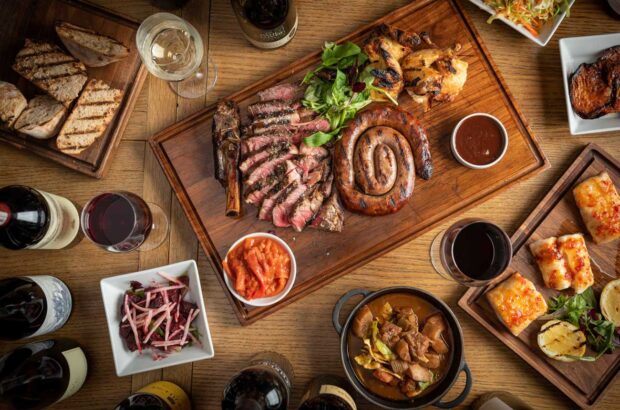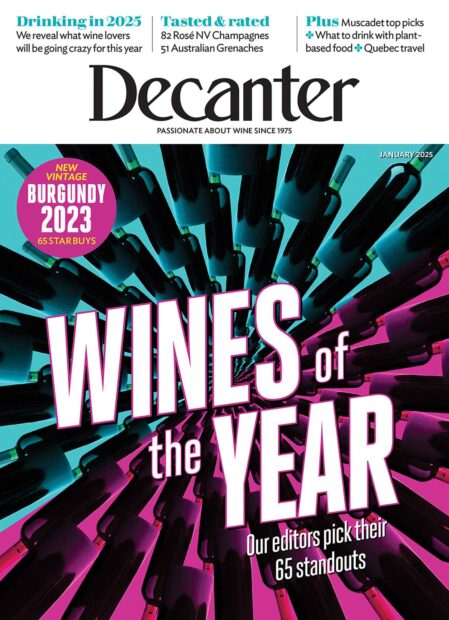With a new direct plane route from London, Friuli is becoming a fashionable destination. Off the beaten Italian tourist track, it is rich with history and beautiful scenery, says CARLA CAPALBO.
It’s a perfect harvest day, clear and warm, and the vineyards of Zamò below the Abbazia di Rosazzo are alive with groups of pickers and the buzz of tractors chugging their loads of green grapes back to the cellars. We’re in Friuli-Venezia Giulia, the northeastern part of Italy.
‘For 2,000 years, this was the line that divided east from west, the Slavic and the Orthodox churches from ours,’ says Don Dino Pezzetta, the abbey’s resident priest, as he points across the valley to Slovenia a few fields away. The handsome 10th-century Abbazia, with its frescoed cloisters and decorative rose gardens peopled with statues, is strategically placed at this intersection of cultures: Austria is an hour’s drive to the north, with Hungary beyond it, and Trieste is close by to the south, where the sea opens out towards Croatia or Venice. ‘Now, thanks to the expansions, we find ourselves in the very heart of the new Europe,’ he adds, smiling contentedly.
Rosazzo – whose most prestigious producers include the pioneering Livio Felluga – is also at the heart of an oenological unification project. Friuli is justly famous for its crisp whites of Tocai Friulano, Sauvignon Blanc and Pinot Grigio, but the region itself is relatively unexplored by tourists. In order to right this balance, a group of seven small comuni, or townships, within the province of Udine have formed an association, Territoria Nordest.
‘Our area of 150km2 lies within the Colli Orientali del Friuli and Friuli Grave DOCs,’ says Colutta. ‘It contains some of Italy’s best wine estates, and fabulous villas. We have many agriturismi – at one third of the cost of Tuscany – and good restaurants, but we haven’t had an easy way to bring visitors here.’ Until now that is. Ryanair now flies to Trieste (an hour’s drive away).
Going native
Being interested in Italy’s wealth of indigenous grapes, I chose to visit at harvest time, to see these varieties at their ripest. This part of the region is home to a number of vitigni autoctoni, as they are called in Italy, including whites Ribolla Gialla, Tocai Friulano, Picolit and Verduzzo; and reds Refosco dal Peduncolo Rosso, Pignolo, Tazzelenghe and Schioppettino.
I spend a busy day in Udine, a little-known but handsome provincial capital town. I love the fact that every Italian town, however big or small, houses at least one artistic masterpiece – Udine has a basketful, including Tiepolos in the Duomo and Bishopric. Market fanatics will enjoy the handsome central piazza – it hosts a colourful food market and is surrounded by streets full of tantalising and stylish shops.
The surrounding countryside of Territoria is perfect for exploring on bike, tasting one’s way from villa to vineyard and from cellar to castle – with lengthy breaks for lunch and dinner. The landscape is a mix of flat plains and ronchi – the gentle hills covered with stepped terraced vineyards that are Friuli’s answer to Piedmont’s brics.
The 1852 Villa Giacomelli, in the comune of Pradamano, was the last Palladian-style villa to be constructed in the Veneto, and boasts a fabulous double-storey ballroom with statues and frescoes. Its 4ha (hectare) park has horses and a trattoria, Ai Savors, serving the farm’s organic produce. From here it’s a comfortable ride to Buttrio, a winemaking centre with something of Wonderland about it: I can’t help marvelling at its 1837 clocktower, with its inverted clockfaces – the 12 is at the bottom and the 6 at the top – how do they tell the time here? (This isn’t the only ‘out-of-the-way’ feature in the area. Alice would also have appreciated the giant chair that sits on a roundabout at Manzano: it’s three storeys high – and in the Guinness Book of Records). Below this madcap church, the Enoteca di Buttrio represents the wines of 20 Buttrio producers; nearby, the elegant Castello di Buttrio has recently been bought by Marco Felluga, the great Collio producer.
Down the hill is the historic farm and cellars of Count D’Attimis-Maniago, nestled below the Castello.
‘Buttrio is the first hill east of Udine, and the start of the Colli Orientali in Udine province,’ explains Count Alberto, whose family has owned the estate since the 16th century. ‘Once these hills reach the nearby province of Gorizia, they become known as the Collio.’ Beside the farm, the Count has retained a few rows of the traditional promiscuo method of vine growing – between fruit trees – that was favoured by Italian growers until modern viticultural methods took over.
Buttrio is home to other prestigious winemakers, including Rosetta Bosco: her lovely ripe 2002 Rosa Bosco Sauvignon has floral notes, and is long, balanced and juicy, with none of the green herbal notes that can over-simplify some Sauvignons. Across the way is the great Girolamo Dorigo, indefatigable champion of all grapes Friulian, whose wines cover the whole range from Brut to Refosco to Picolit. His superstars include the seductive red Bordeaux blend, Montsclapade, and the white Ronc di Juri Ribolla Gialla, but he also produces fine examples of red native varieties, including the rare Pignolo, and Tazzelenghe. This means ‘tongue-cutter,’ and this traditional vine has had some of its high acidity and tannins rounded out by good use of wood. ‘It’s an uncomplicated wine that goes particularly well with the rustic dishes of our local cucina,’ says Dorigo.
Also worth visiting is Enzo Pontoni, the quintessential garagiste – he spent 15 years as a mechanic before devoting himself completely to winemaking. A strong, suntanned man of few words, his wines are the result of an extreme relationship with the earth. Not far from here is Livon, whose many prized wines include the RoncAlto crus and a fine version of Schioppettino. This native grape owes its name to the ‘little explosion’ its hard, thick-skinned ripe berries make as they pop between your teeth. With high tannins and acidity but low alcohol, its flavours are of wild raspberries and violets, with distinctive spicy, black-peppery notes.
Il Campiello at San Giovanni al Natisone is the best restaurant in the region, and a favourite of local winemakers, who can often be found there. Dario Macorig is a natural host, and serves fresh fish in his lively dining room, where I dine with Adriano Gigante, president of the Consorzio of the Colli Orientali del Friuli DOC, and producer of a fine Tocai from Corno di Rosazzo.
‘Tocai appreciates the microclimate here, and does best on the hillsides at altitudes of 100–200m,’ he says. ‘We’re halfway between the mountains and the sea, and affected by both. Tocai was always considered Friuli’s “base” white, but now it is being worked better the results are impressive.’ In 2007, the EU may oblige Friuli to stop calling it Tocai to avoid confusion with the Hungarian grape of the same name. ‘In that case, we’ll opt for Friulano,’ which would link it unquestionably to our region,’ says Gigante.
The olive groves
Nearby, there are two important wineries to visit on the Oleis hills. As the name suggests, these were once famous for their olive groves – and oils – and the local communit
Written by Carla Capalbo






